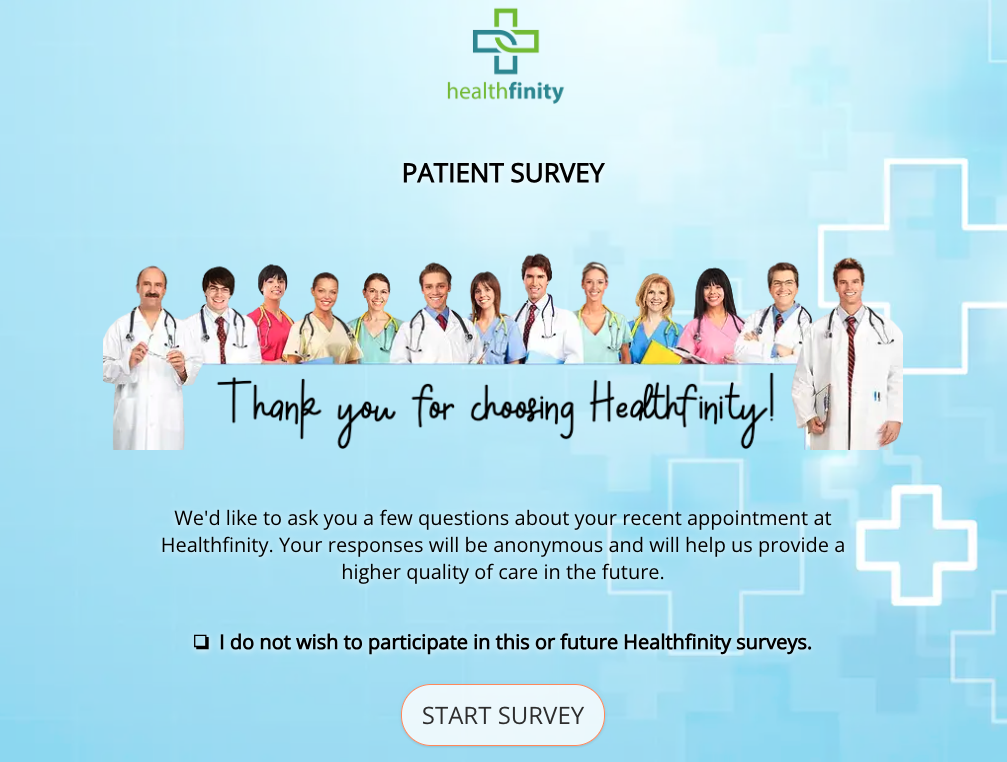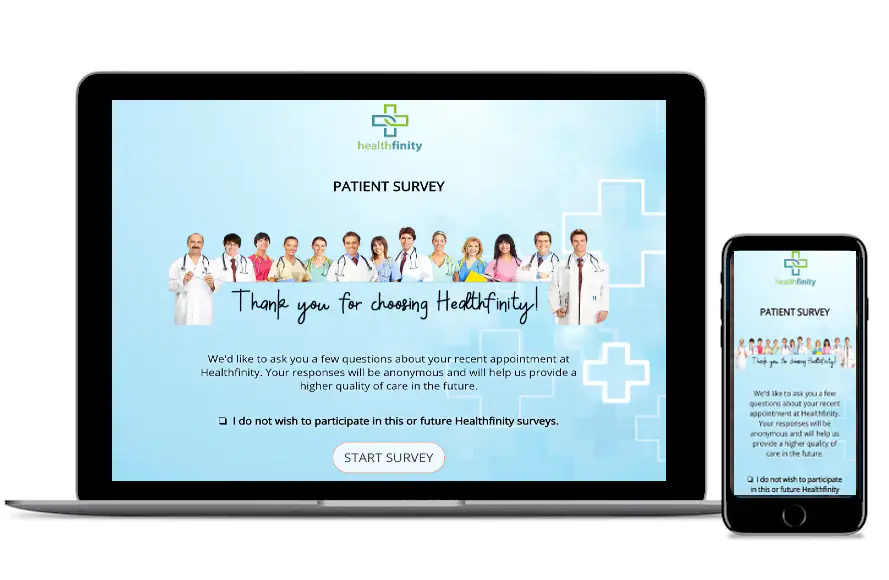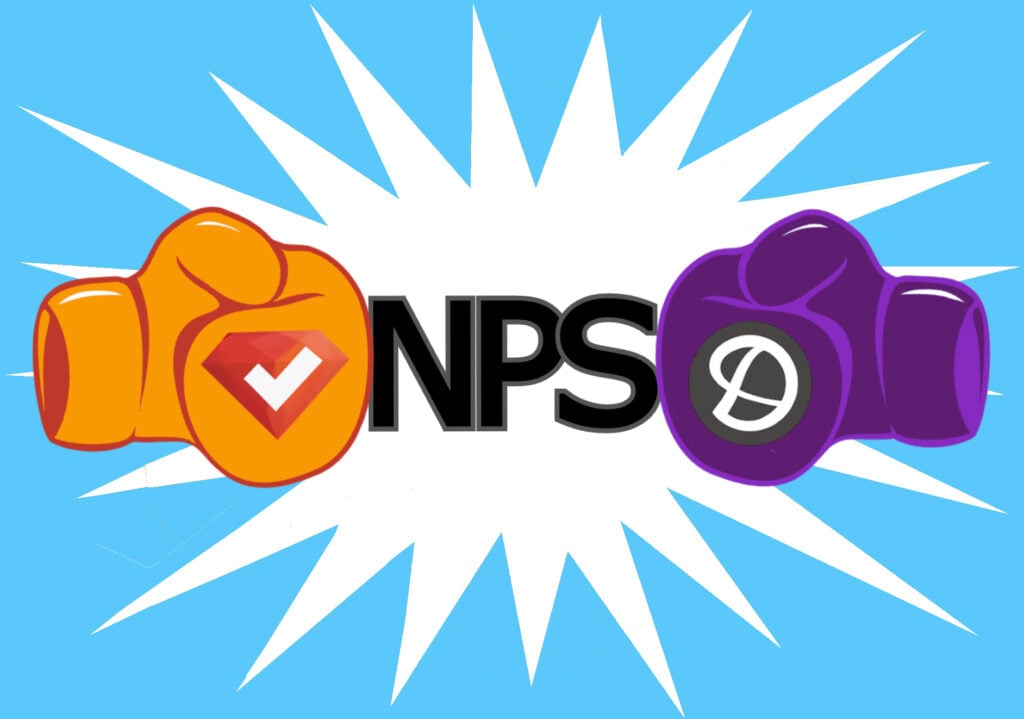Have you ever received an unexpected survey from a company or organization? More than likely, you had an interaction with them, but to your knowledge, you didn’t agree to surveys. Welcome to the opt-out survey, a type of survey that does not require consent to send, but rather expects you to respond that you don’t wish to participate should that be the case. In this blog, we’ll look at eight types of opt-out surveys you can create and the legality of sending them without consent.
Create Your FREE Opt-Out Survey or Questionnaire Now!
What Is An Opt-Out Survey?
An opt-out survey is a type of survey where participants are automatically included and expected to participate unless they specifically choose not to. Unlike opt-in surveys, where individuals must actively express their willingness to participate, opt-out surveys assume consent and require participants to take action only if they wish to decline.
Most organizations or companies use opt-out surveys to increase participation rates since they can send them to anyone without consent. Of course, there can be legal and ethical considerations when using this approach which we highlight in a moment.
Who Uses Opt-Out Surveys?
Here’s a look at the types of organizations and companies that typically use opt-out surveys.
- Businesses collecting customer feedback on products or services.
- Government agencies gathering data on public services, policies, or social issues.
- Healthcare providers obtaining patient feedback or seeking participation in research studies.
- Educational institutions collecting feedback from students, parents, and staff on school performance, programs, etc.
Are Opt-Out Surveys Legal?
Opt-out surveys are generally legal if you fully inform participants about what the survey entails, how you will use their data, and their right to not participate. The ability to opt out needs to be clear and obvious. If your survey makes it difficult to opt-out, the survey could be legally challenged. Some legal and ethical standards to consider include:
Data Protection and Privacy Laws
Data protection laws like the European Union’s General Data Protection Regulation (GDPR) and the Telephone Consumer Protection Act (TCPA) in the United States require organizations to obtain explicit consent before collecting personal data. In these areas, opt-out surveys may be looked at as questionable if they assume consent without clear, informed agreement from participants.
Sector-Specific Regulations
Certain industries, such as healthcare, education, and finance, may have additional regulations around consent and data collection. For example, in the United States, the Health Insurance Portability and Accountability Act (HIPAA) has strict guidelines on patient data, making opt-out surveys more complicated.
Employment and Workplace Laws
In workplaces, employers may use opt-out surveys for employee feedback or performance evaluations. However, employers must ensure that participation is voluntary and that employees do not feel forced to participate. If this is not clear to the employee, employers could face legal issues regarding labor laws or employee rights.
If you have any concerns about the legal or ethical issues surrounding your opt-out survey, we recommend you consult with an attorney before sending them.
How To Create A Legal Opt-Out Survey
Here are some steps to take when sending out an opt-out survey to be sure you are doing so legally and ethically.
1. Comply with Laws and Regulations
Be sure you are operating within the laws and regulations highlighted in the previous section. Again, if you are unsure about the legality of your opt-out survey, consult with a legal professional to ensure compliance with local, state, and international laws.
2. Provide Clear and Transparent Information
Clearly state the reason for the survey and how you will use the data. Make the opt-out process clear, easy, and accessible. Avoid hidden or complicated steps that could be seen as discouraging opt-outs. Be sure that if someone does opt-out, they are removed from your send list. In this Consumer Finance report, you can read more about “reasonable and simple opt-out methods.”
3. Respect Participants’ Privacy
Only collect data that is necessary and avoid asking sensitive questions or personally identifiable information. Be sure your survey is secure with encryption, and when possible, make survey responses anonymous to protect participants’ identities and reduce the risk of data breaches.
4. Monitor and Document Consent
Keep detailed records of who opts out and always respect their decision to opt out. This documentation can protect you if there are any disputes or complaints later on. When a participant opts out, a confirmation message should go out to reassure them that they will no longer receive surveys.
5. Review Survey Practices Regularly
Regulations may change over time, so periodically review and update your survey policies and practices to ensure they remain compliant with evolving laws and best practices.
Create Your FREE Opt-Out Survey or Questionnaire Now!
8 Types of Opt-Out Surveys
You may send opt-out surveys in a variety of ways. The type of survey you choose may depend on the target audience, the nature of the survey, and the resources available.
1. Email
Sending opt-out surveys via email is one popular method. Surveyors will automatically enroll recipients into an email campaign and allow them to opt out if they choose. Often, those who want to opt-out simply click an opt-out button that automatically removes them from future emails (a confirmation email of the opt-out may be sent, or upon clicking a pop-up that says they have successfully opted out may appear).
2. Postal Mail
Organizations and companies, typically those with older demographics or those in rural areas with limited internet access, may send opt-out surveys via “snail mail.” Recipients receive a paper survey along with instructions on how to opt out, often via a reply slip or phone call. Businesses like utilities or financial institutions may also include opt-out surveys as inserts in billing statements or other mailed communications.
3. SMS/Text Messages
Opt-out surveys sent via SMS text have become more and more popular to reach people on the go. These also make it easy for recipients to opt-out of; typically, they just reply back with the message STOP.
4. Phone Calls
Live calls are becoming less common, however Interactive Voice Response (IVR) systems are now being used to conduct opt-out surveys via automated phone calls. Participants can press a button to complete the survey or opt out by following the provided instructions.
5. In-App Notifications
For businesses with mobile apps, opt-out surveys can be delivered via in-app notifications or pop-ups. You can automatically enroll these users in the survey unless they dismiss or opt out of the notification. However, since they have already downloaded the app, typically they have interest in providing survey responses.
6. Social Media
Social media platforms like Facebook, X, or LinkedIn can be used to send surveys directly to users via direct messages, where users are automatically enrolled but can opt out by declining the survey.
7. Customer or Employee Portals
For companies and organizations with internal portals (e.g., employee portals, customer or patient accounts), opt-out surveys can be integrated directly into the platform. Participants fall into an auto-enrollment, but they can opt out through the portal itself.
8. Event or Service Registration
Sending opt-out surveys as part of the registration or sign-up process for events, services, or subscriptions is very common. Participants are automatically included in the survey unless they choose to opt out during the registration process.
Opt-Out Survey Example
The most important page of your opt-out survey is undoubtedly the welcome page. This is where you will explain the purpose of the survey (informed consent) and highlight the ability to opt out of the survey (transparency). As you can see, we have even bolded this element. To opt-out, a patient simply clicks the checkbox. You can also put a link here that would opt them out when clicked.
Adding branding and imagery, which is easy with SurveyLegend, also builds credibility and trust.

To see examples of SurveyLegend’s surveys, check out our survey templates.
Conclusion
You should use opt-out surveys carefully to avoid legal and ethical issues. However, when you create them properly, they are convenient and easy tools for researchers and organizations. To balance efficiency with respect for individual autonomy, it is crucial to fully inform participants about their right to decline and that opting out is as straightforward as possible. Ready to start? SurveyLegend has you covered with easy to create, user-friendly, and highly secure surveys of all types. Start today for free!
Have you participated in an opt-out survey before? Did you wind up opting out? Do you have any issue with receiving a survey unasked? Let us know in the comments!
Create Your FREE Opt-Out Survey or Questionnaire Now!
Frequently Asked Questions
Opt-in surveys require participants to actively give their consent to participate, showing that they have voluntarily chosen to provide their feedback. Opt-out surveys automatically include participants unless they explicitly decline, often resulting in higher response rates but raising ethical concerns about informed consent.
The choice between opt-in and opt-out depends on the goals of the survey, with opt-in prioritizing participant autonomy and opt-out focusing on maximizing data collection.
Organizations have faced legal challenges for using opt-out surveys, especially when issues related to consent, privacy, or misleading practices are involved. One notable example is class-action lawsuits under privacy laws such as the General Data Protection Regulation (GDPR) in the European Union. For this reason, it is recommended that organizations consult with an attorney if they have any concerns about legal issues.





